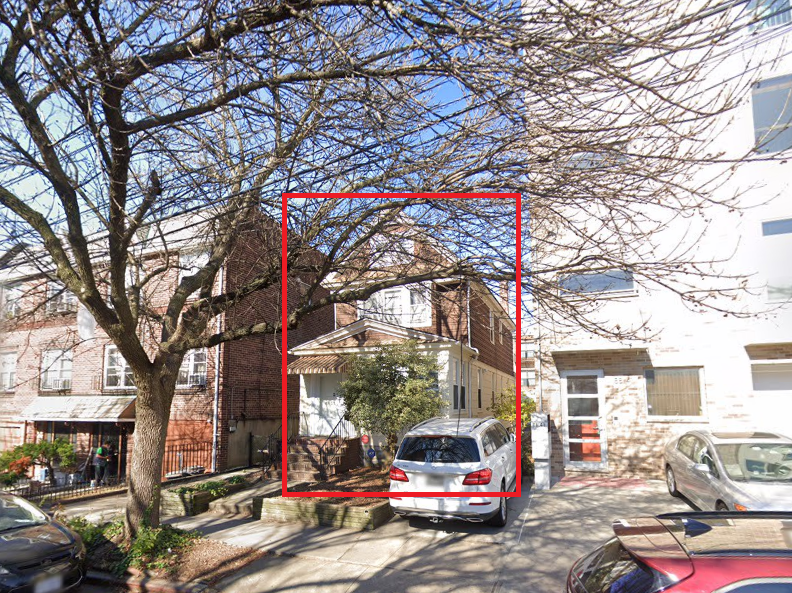> Before September 11, 2001, the most infamous day in New York City history was most cruel to women and children enjoying a church outing on a day cruise to Long Island. Though the Triangle Shirtwaist Fire of 1911 is often cited as the deadliest day, seven times as many people were killed on June 15, 1904, when the steamship General Slocum went ablaze, claiming 1,021 lives. This year marks the 100th anniversary of that disaster, which affected people throughout New York City and many in Queens.
"The fact that over 1,200 people perished and yet their descendents flourished and grew, I think it shows the ability to overcome a great tragedy," said Ruth Cipko, director of the General Slocum Memorial Association. "It is important that the people are remembered, particularly the 61 unidentified whose remains rest under the memorial at Trinity Lutheran in Middle Village."
On June 12, hundreds gathered at the memorial to honor the unidentified bodies of the disaster who were buried there. It was one of many ceremonies taking place to acknowledge the centennial.
"The terrorist attacks on September 11, the recent deaths of the last two survivors and the 100th anniversary have combined to bring the story back into the public memory to some extent," said author Edward ODonnell, who wrote a book about the Slocum entitled Ship Ablaze, remarking on how the the tragedy still reverberates with people today.
Many people are unaware that, prior to the disaster, the Slocums history was fraught with mishaps and collisions. In 1891, as the popularity of excursion steamers was reaching its peak, the General Slocum was constructed by the Devine-Burtis Shipyard in Red Hook, Brooklyn, for the Knickerbocker Steamboat Company. The ship, which was available for private charter and holiday transport, made her maiden voyage on Memorial Day.
But, in August of her first year of operation, the Slocum was involved in two accidents: On the 14th, it ran aground in Rockaway, and on the 17th it backed into another steamer. Seven years later, on July 9, 1898, it rammed into the Amelia near the Battery. The year 1902 would bring two more accidents, when the Slocum ran aground on a sandbar in Jamaica Bay in an effort to avoid a collision with a yacht, and later, when it rammed into another excursion craft, as the two boats attempted to dock at the same pier.
While these incidents led to a significant decline in business for the ship, they were also followed by two years of peaceful operations that lasted until June 15, 1904. On that day, more than 1,300 people boarded the steamer to take them to Locust Grove on Long Island. St. Marks Lutheran Church in Manhattan had chartered the boat to celebrate the end of the Sunday school year.
The group, which was made up of mostly women and children, boarded in the morning and at 9:30 a.m., the Slocum departed, heading up the East River. Less than an hour later, as the ship was passing East 90th Street and Hell Gate channel, near Astoria Park, a spark ignited a barrel of straw in a storage room. As a band played German tunes, smoke began to billow from below and the crew, inexperienced at dealing with fire, attempted to put out the growing blaze with hoses that burst at the first sign of pressure. Frightened passengers looked on as the fire raged out of control, and Captain William Van Schaik, afraid to ignite oil tanks at the nearby piers, raced toward North Brother Island a mile away.
As flames licked the deck, igniting the newly applied flammable paint, passengers jumped overboard, discovering only when they began to sink that the lifevests had rotted and were no longer buoyant. Moreover, life boats had been wired to the deck and could not be removed. Most passengers did not know how to swim and drowned before nearby boats could reach them. By the time the Slocum beached itself on the island, most had either died in the water or died in the flames.
That evening, rescue workers did what they could to salvage corpses of children and adults floating in the East River, and to find enough coffins for the rising death toll. The city morgue proved too small and the adjacent Charities Pier at East 26th Street was converted into temporary storage for the dead. Bodies were brought in by tugboat.
"After the tragedy, the central monument was built and unveiled in 1905," said Cipko. "From the very beginning, the survivors and relatives held memorial services. In a year like this, the 100th anniversary, there is a lot of fanfare but were here every year."
Cipko is a part of a network of organizations that keeps the memory of the Slocum alive through memorial events.
"My great uncle, his name was Harry Dobert, was a police officer for the marine division and he was one of the rescuers," she said. "I knew him as a little girl and he died in 1948. Doberts obituary said that he had received a commendation for his rescue efforts."
The General Slocum Memorial Association was originally a group of survivors that met to memorialize the event. When the last of the original group died, new members of the association pledged to keep the memory alive.
"They got together and made something beautiful so people could come back to pray for those souls lost," said Cipko. "Now we have continued that tradition."
On June 15, the Greater Astoria Historical Society held a ceremony at the World War I memorial in Astoria Park, where the group officially unveiled a historical marker dedicated to the Slocum disaster.
After the tragedy, the General Slocum was raised by a salvage company and the hull was sold at auction to a businessman who converted it into a coal barge, the Maryland. Seemingly forever ill-fated, the newly christened ship sank off the coast of Atlantic City in 1910.
































